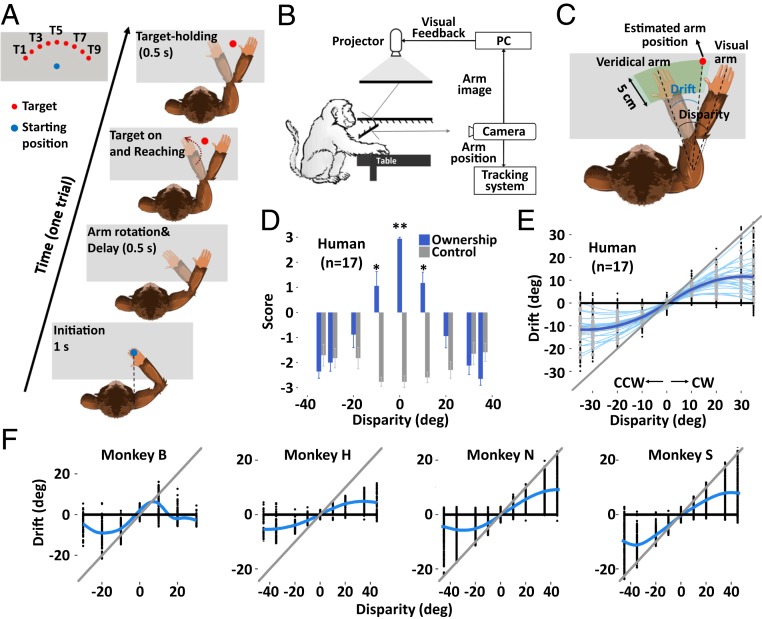Fig. 1.
Behavioral task, subjective illusion statements, and proprioceptive drift. (A) Overview of the task. The subject was instructed to hold its P hand over the starting position (blue dot) to initiate a trial. After the rotation of the V arm, a virtual red dot was presented, and participants were required to place their P arm on the target and hold to get a reward. (B) The video-based experimental system. (C) Schematic depicting “proprioceptive drift,” and reward area (in green) for reaching to ensure that no feedback was given to monkeys about their response. The monkey was rewarded when the estimation of the arm was located anywhere between the positions of the pure V arm (completely bias to the V information, corresponding to the leftmost side of the green zone) and the pure P arm (completely bias to the P arm, the rightmost side of zone). The arm location displayed is an example trial with the disparity at +35° during the target-holding period. See also SI Appendix. (D and E) The subjective statements of arm illusion and proprioceptive drifts of 17 human participants (experiment 1, ownership and control questions see SI Appendix, Table S1). (F) proprioceptive drifts of 4 macaque monkeys (individual sessions see SI Appendix, Fig. S1). The absolute V (gray line) and P (black line) biases are also plotted. *P < 0.05; **P < 0.01.

